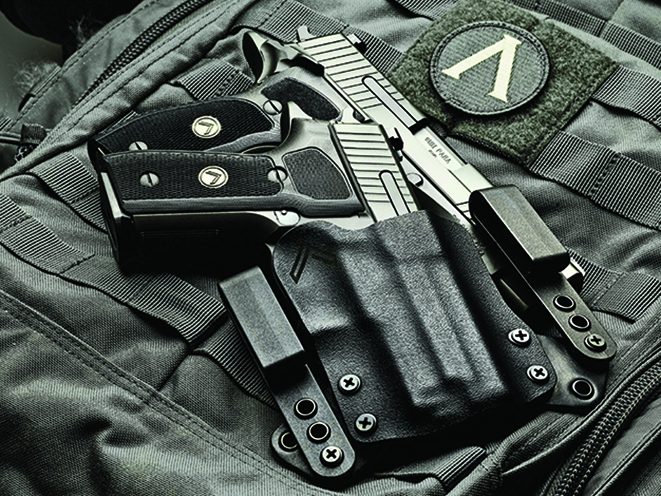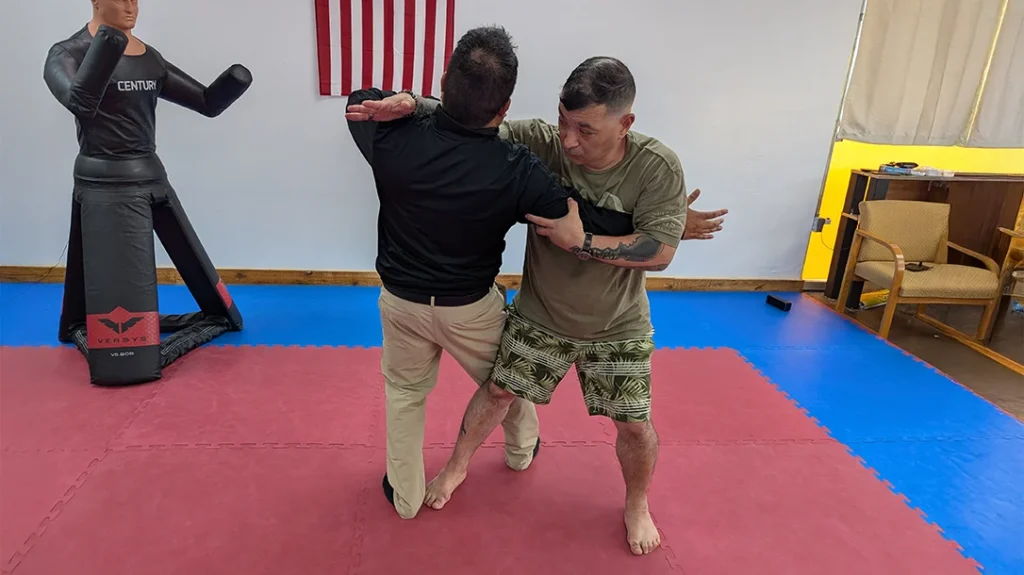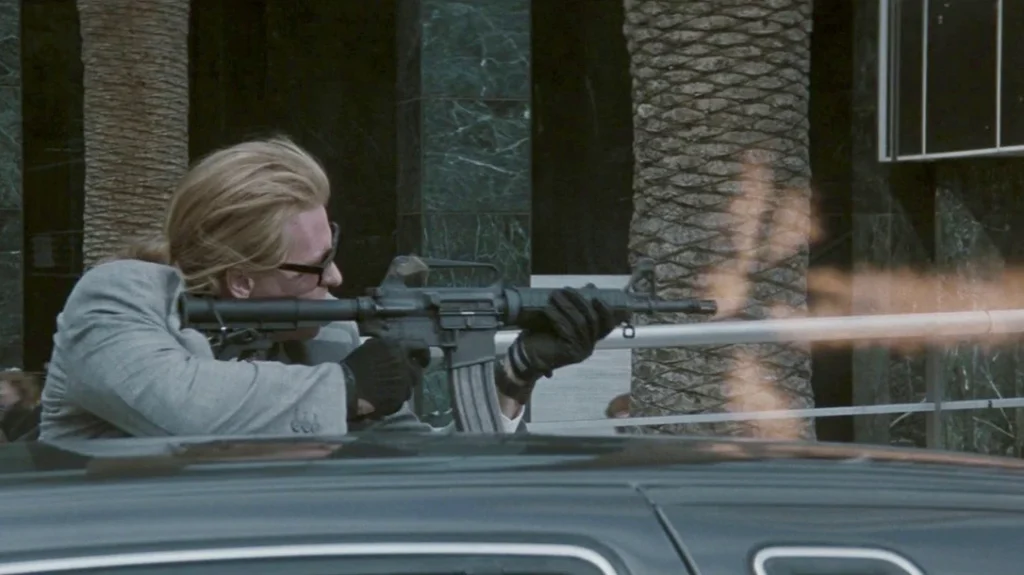I got my concealed carry permit when I was 21 years old, with my first gun being a Glock 19. Back then, I was a single guy who didn’t have to worry about having a gun in the house with a wife and kids. But now that I’m married and have three children, I’ve had to completely reconsider how I treat securing a gun in the house, including never, ever leaving it unsecured, even for just a second.
In Your Home
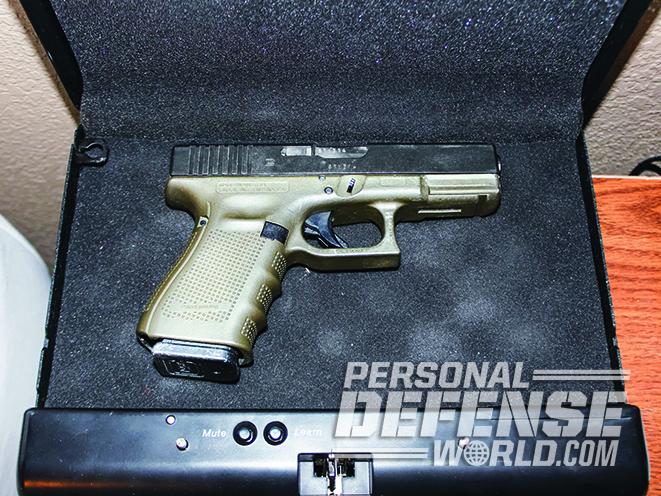
The fact is, if you have your CCW and a family like I do, there are a few critical things you need to know. First, you should sit down with your family and explain that there’s going to be a gun in the house. If your kids are young like mine are, you need to explain to them as best as you can that they should never touch the gun. But most importantly, get a safe for the gun so that, unless the gun is on your person, it’s always locked up. Personally, I have a portable rapid-access safe that sits on my nightstand so I can access my gun in three seconds or less in case of an emergency. Also, if your spouse is comfortable with firearms, they should be trained on the gun and know the combination of the safe so they can access it if you’re not home.
Advertisement — Continue Reading Below
Another important item for you and your spouse is to understand deadly-force law. You need to have a crystal-clear understanding of when you’re legally justified in defending yourself with your CCW. You can likely sign up for a training course on this topic in your local area, and there are a number of good books on this subject, including Massad Ayoob’s classic In The Gravest Extreme.
Always Protected
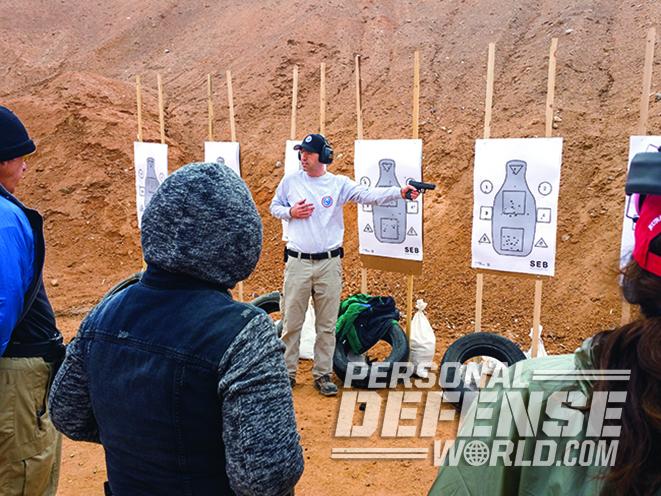
Knowing what to do with a gun in the house is just the beginning of being a responsible CCW holder. When you leave your house with the gun on your hip or in your pocket, you need to know where you are and are not allowed to carry it. For instance, you are forbidden from carrying a gun in any government building, including the post office. In many states, you’re also not allowed to carry a gun in schools, however, in the state of Utah where I live, we are allowed to carry in a school. The easiest thing to do is to go to your state government’s website and read all of the regulations regarding having a concealed weapons permit in your state. While it won’t be the most thrilling reading, most government websites do a good job of making it very clear where guns are not allowed. Also, don’t forget about private businesses and how they’re allowed to post “No Guns” signs on their storefront and how you want to make sure you obey those, too.
Advertisement — Continue Reading Below
- RELATED STORY: Concealed Carry Tips from Matt Jacques & Massad Ayoob
If you do end up having to go into the post office or a place that doesn’t allow guns, you’ll want to lock up your gun when you leave it in the car. Fortunately, there are dozens of ways to secure your gun in your vehicle so someone can’t steal it. For instance, there are companies that make console vaults that turn the center console of your vehicle into a safe for locking up your gun and other gear. There are also companies that make safes for your glove compartment, and if you own a truck, you can get safes for the back of the truck and for underneath the rear seat. If you use a portable handgun safe like I do, then you can take the security cable that comes with the safe and wrap it around your vehicle seat, ensuring the safe isn’t going anywhere.
When I look back at my 21-year-old self who was beyond excited for the right to carry a gun, there are two last bits of information I would have given to myself. First, take plenty of training courses so you’re proficient with your CCW. Another great place to start is at local matches. The second thing is be prepared to try out dozens and dozens of holsters before you find the one that’s right for you. Like many gun owners, I have a box of holsters sitting in my home, and over the years you’ll probably end up with a box of them, too.
This article was originally published in ‘Concealed Carry Handguns’ 2017. For information on how to subscribe, please email subscriptions@
Advertisement — Continue Reading Below
